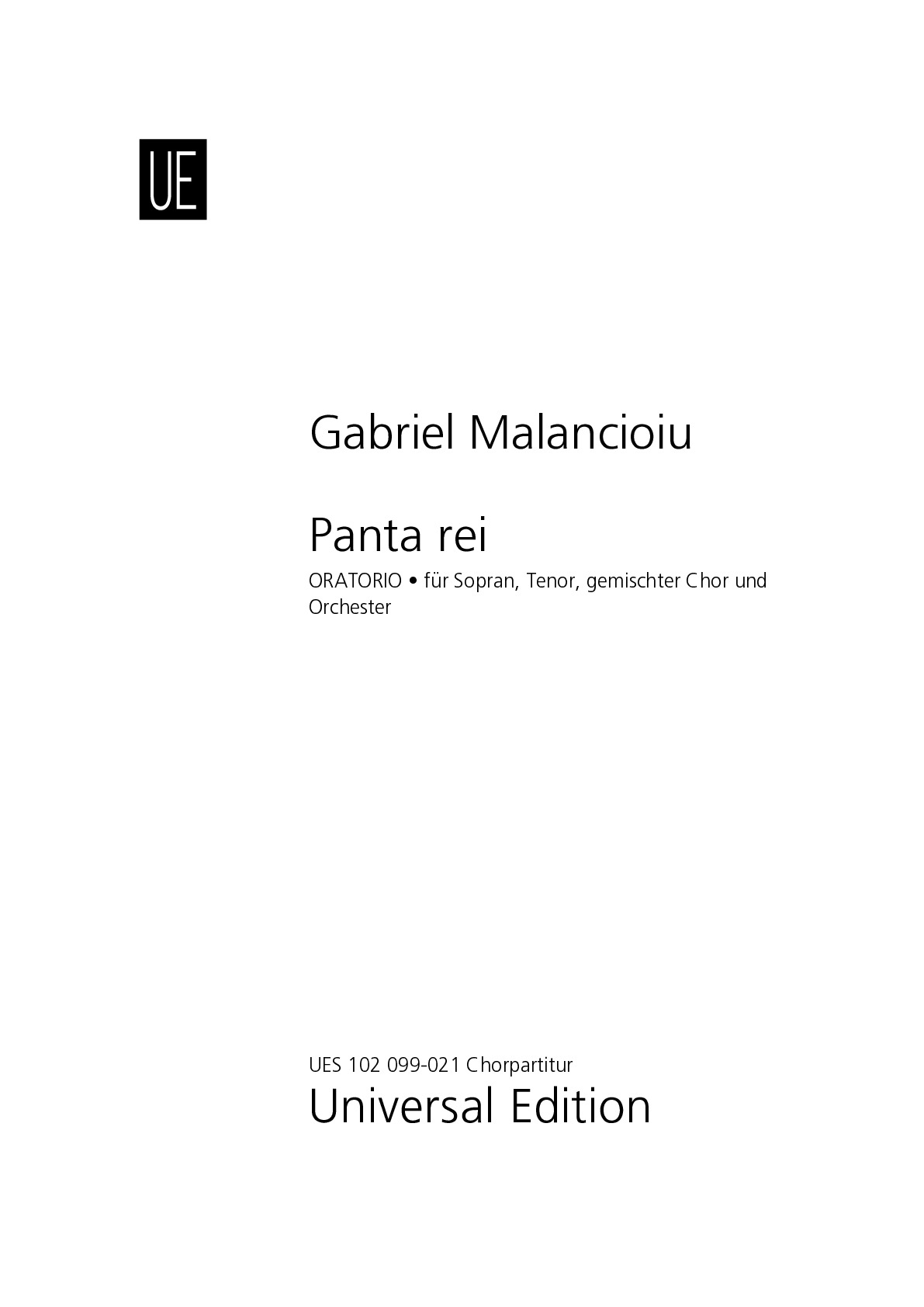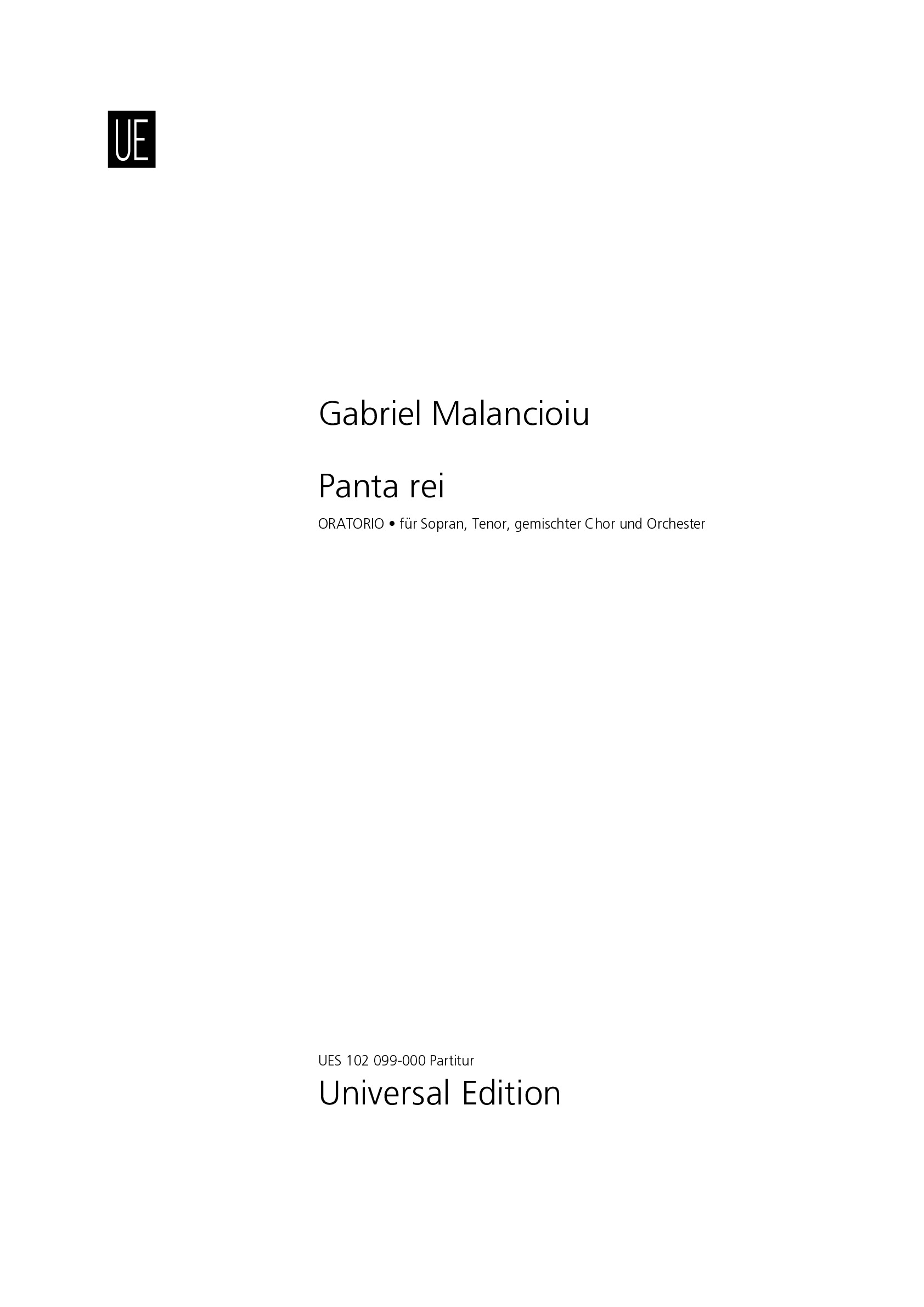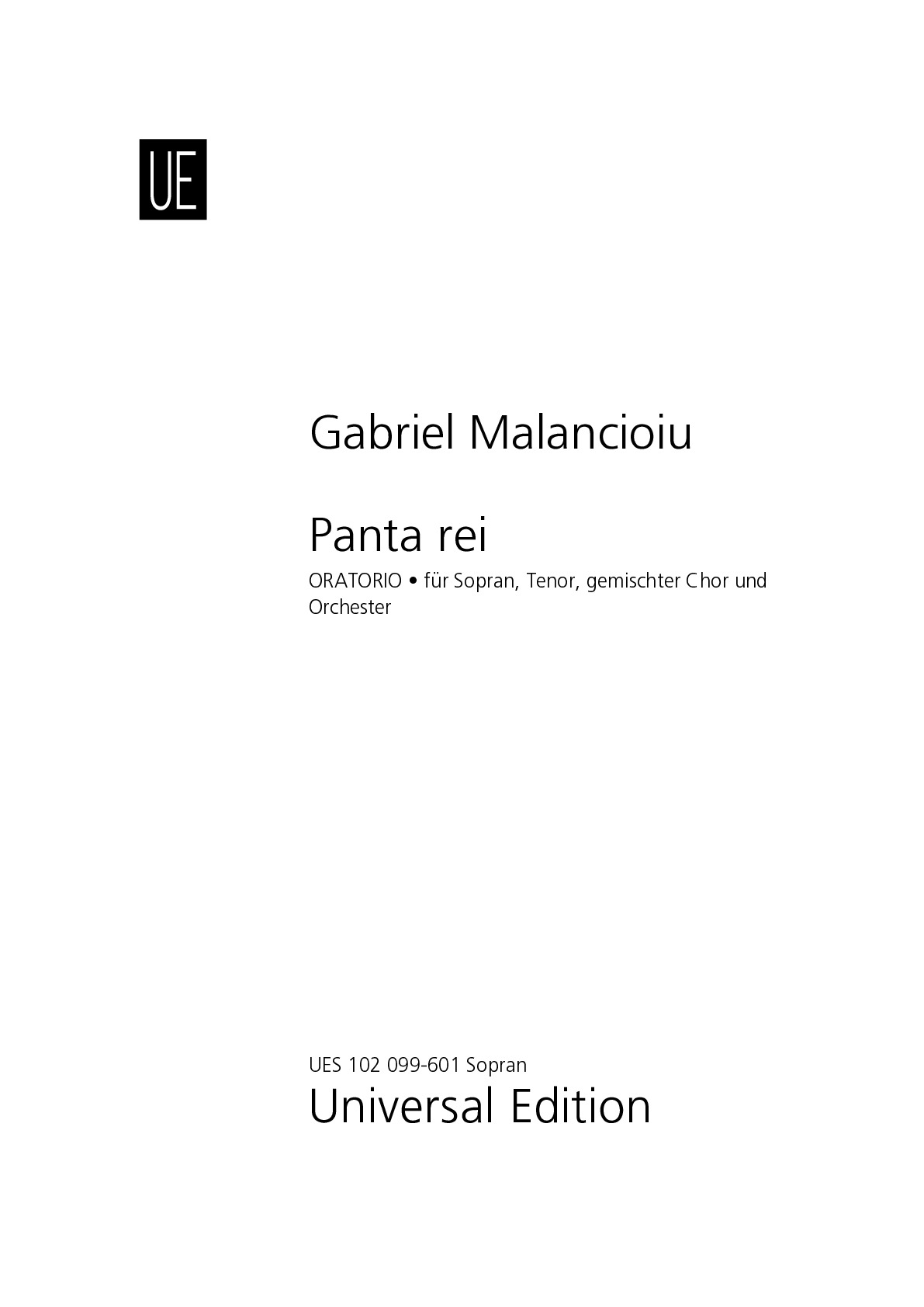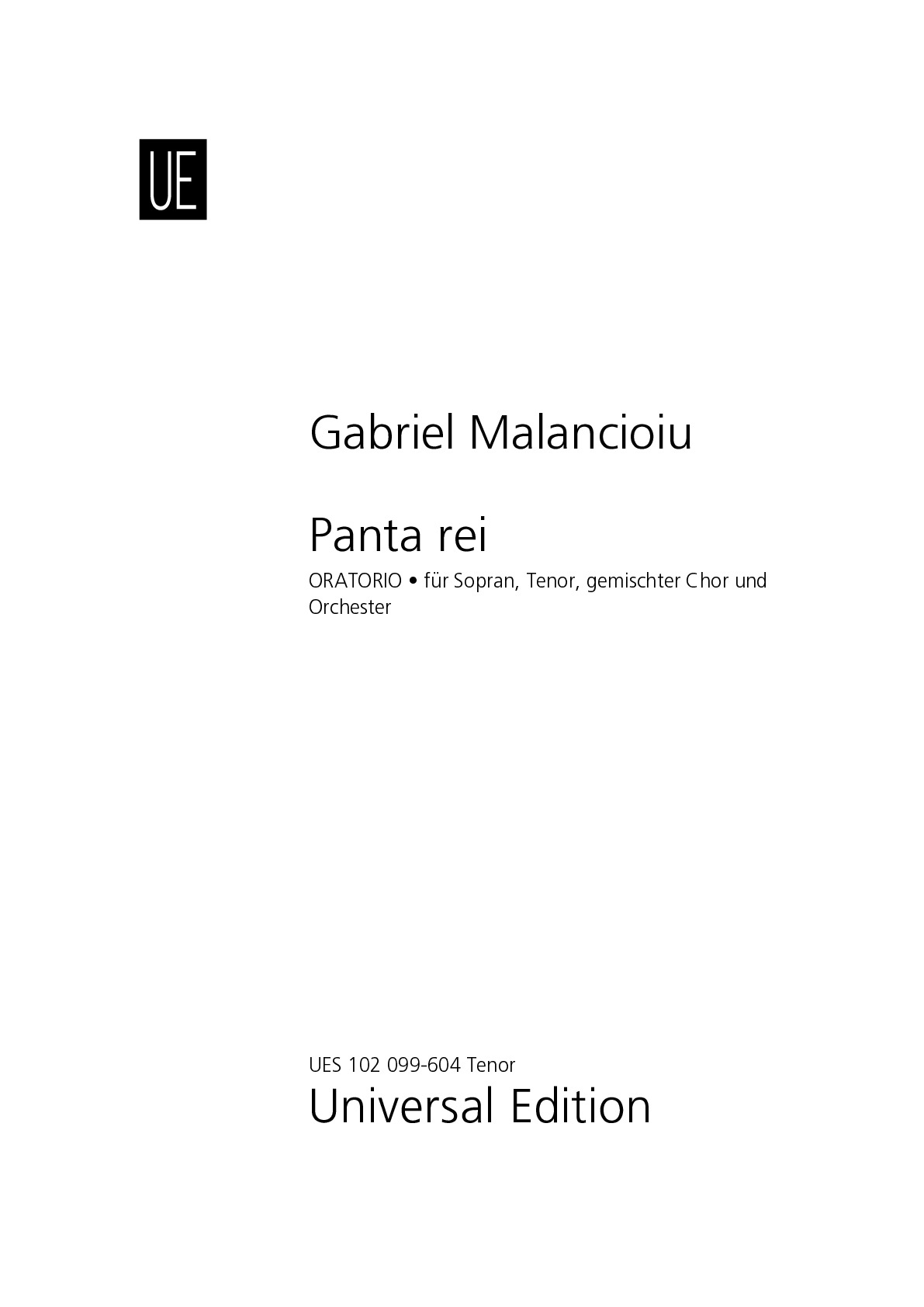
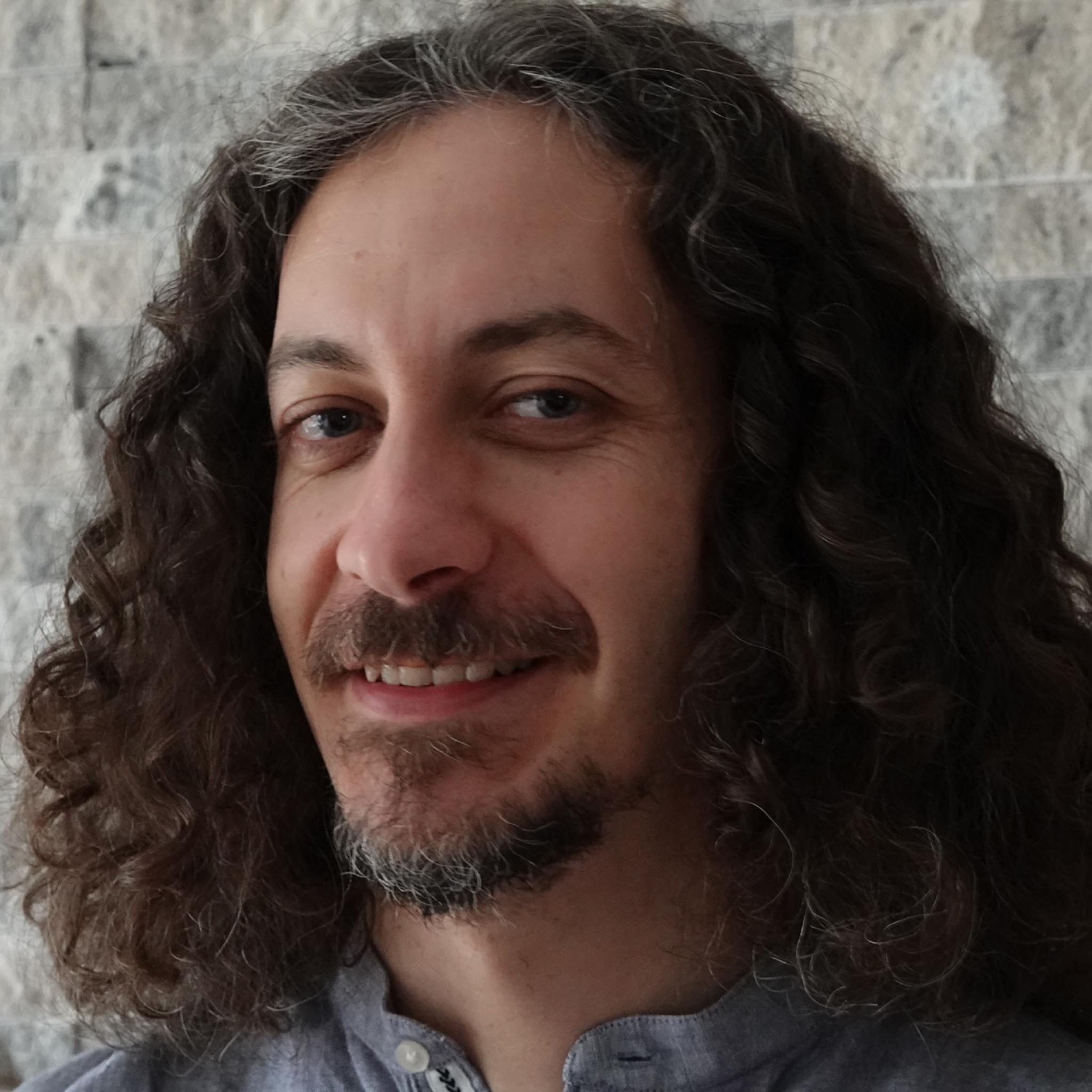
Gabriel Malancioiu
Panta rei
Short instrumentation: 4 4 4 4 - 6 3 3 1, timp, perc(2), hp, pno, str
Duration: 65'
Choir: mixed choir
Solos:
soprano
tenor
Instrumentation details:
piccolo
1st flute
2nd flute
3rd flute
cor anglais
1st oboe
2nd oboe
3rd oboe
bass clarinet in Bb
1st clarinet in Bb (+cl(Eb))
2nd clarinet in Bb
3rd clarinet in Bb
contrabassoon
1st bassoon
2nd bassoon
3rd bassoon
1st horn in F
2nd horn in F
3rd horn in F
4th horn in F
5th horn in F
6th horn in F
1st trumpet in C
2nd trumpet in C
3rd trumpet in C
1st trombone
2nd trombone
3rd trombone
tuba
timpani
1st percussion
2nd percussion
harp
piano (+cel)
violin I (18 players)
violin II (16 players)
viola (12 players)
violoncello (12 players)
double bass (8 players)
Panta rei
Sample pages
Work introduction
Panta rei is an oratorio based on the texts of Heraclitus, in ancient Greek, being structured in 12 parts.
The fragments left by Heraclitus had an attraction comparable to me only with the wisdom concentrated in the only text left by Lao Tzu, Tao Te Ching, the all-encompassing love expressed in Kabir's or Rumi's poems, Zarathustra's reflections as presented to us by Nietzsche. There are many similarities between the fragments of the sage of Ephesus and the wisdom found in various mystical and religious currents: many of Heraclitus' thoughts defy logical thinking (making him known as Skoteinos - The Obscure) like the paradoxes expressed in the koans of Zen masters. Emphasizing the dynamic character of the Universe, of permanent transformation, is a common coordinate of all mystical traditions, regardless of region and period. Heraclitus' statement, "You cannot step into the same river twice" and the comparison of the world with eternal fire, is well known. The title Panta rei laconically expresses the idea of a continuous evolution, both in terms of structures and in the orchestral field.
I have considered two approaches in trying to guide the listener's consciousness to the space of unity. In order to create polarities it is necessary to establish a demarcation line between them; the dissolution of these boundaries will direct consciousness to the state of unity.
Following this line, in which the contrasts dissolve into a unitary state, I’ve tried to approach the sacred realm in the Ist, the VIth, and the XIIth parts of the work. The contrasts are eliminated, the emphasis being on the creation of static sound surfaces. The non-evolutionary state of musical structures wants to anchor the listener's consciousness in the present moment. Another feature of these non-evolutionary music sections is the refinement of the listener's perception.
The second approach that leads us to the state of unity can be achieved through the dynamic balance of polarities. Regarding the general plan of Panta rei, I’ve tried to reach the space of unity by dynamically balancing the polarities: the "static" parts: I, IV, VI, VIII, X, XII, are meant to counterbalance the active energies in the "dynamic" parts: II , III, V, VII, IX, XI. A state of balance was intended to be achieved within each part, assuming a meeting of antagonistic forces, within each section or microsection, the idea of the whole being found in the component parts.
Throughout the whole piece I’ve tried to revive mythical sound spaces by using an ancient language, based on the special atmosphere it exudes, by using modes with small number of pitches, by unleashing energetic forces with primitive aspects, or through the ritual aspects of some sections of the work.
What is necessary to perform this work?
Percussion list:
Tamburino, Tamburo piccolo, Bongos, Tom-Tom, Timpani, Gran Cassa
Glockenspiel, Xilofono, Vibrafono, Marimba, Campane
Piatti, Triangolo, Blocco di metallo, Tam-Tam
Woodblock, Frusta
Temple bowls, Flexatone

